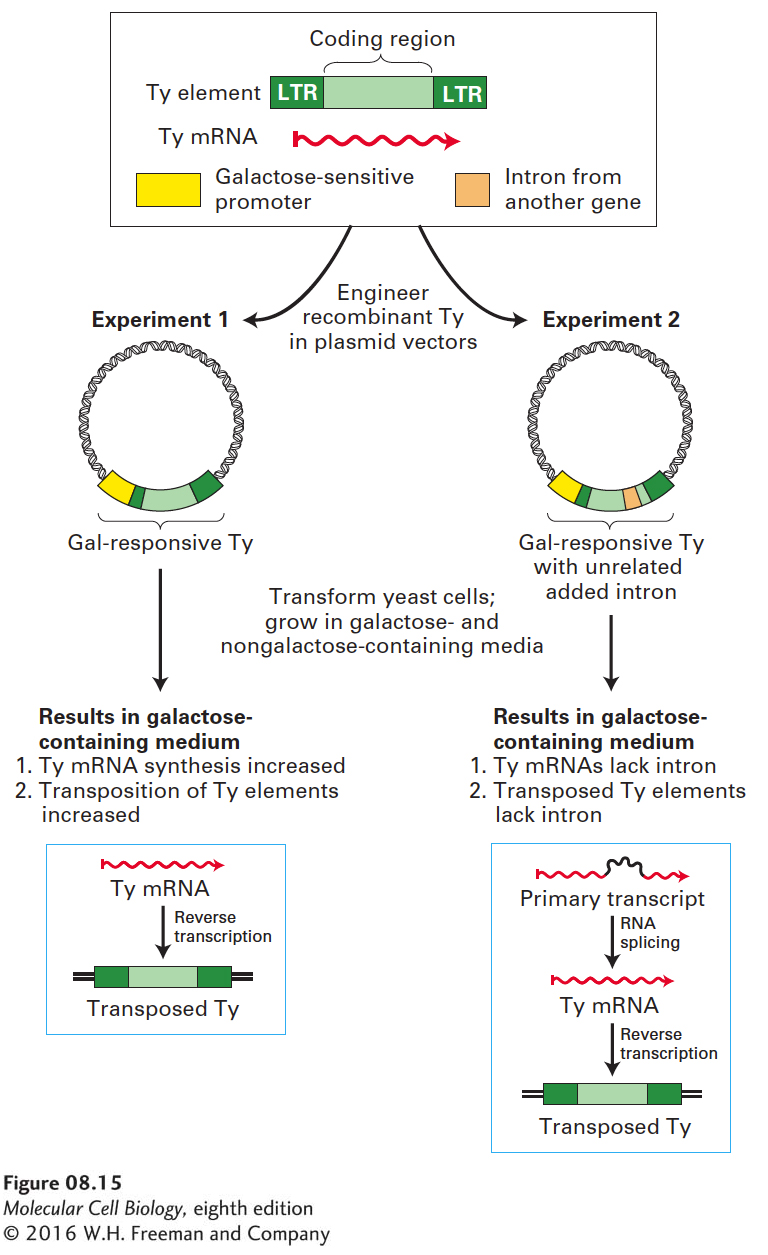
EXPERIMENTAL FIGURE 8- 15 The yeast Ty element transposes through an RNA intermediate. When yeast cells are transformed with a Ty- containing plasmid, the Ty element can transpose to new sites, although normally this occurs at a low rate. Using the elements diagrammed at the top, researchers engineered two different recombinant plasmid vectors containing recombinant Ty elements adjacent to a galactose- sensitive promoter. Yeast cells transformed with these plasmids were grown in a galactose- containing and a galactose- free medium. In experiment 1, growth of cells in galactose- containing medium resulted in many more transpositions than in galactose- free medium, indicating that transcription into an mRNA intermediate is required for Ty transposition. In experiment 2, an intron from an unrelated yeast gene was inserted into the putative protein- coding region of the recombinant galactose- responsive Ty element. The observed absence of the intron in transposed Ty elements is strong evidence that transposition involves an mRNA intermediate from which the intron was removed by RNA splicing, as depicted in the box on the right. In contrast, eukaryotic DNA transposons, such as the Ac element of maize, contain introns within the transposase gene, indicating that they do not transpose via an RNA intermediate. See J. Boeke et al., 1985, Cell 40:491.
[Leave] [Close]